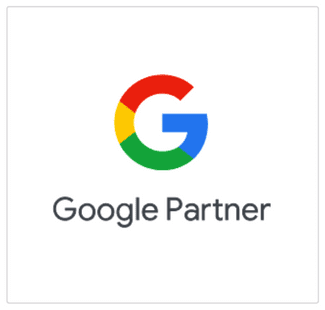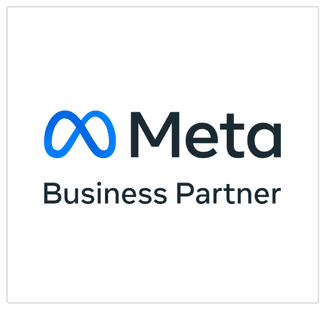“Ping!” – The sound of a new email often ends up ignored, overshadowed by vibrant social media alerts. However, this discreet “ping” is an extremely powerful marketing tool, capable of converting curious readers into dedicated customers. Email marketing is not just a communication method, but an essential strategy for increasing sales and strengthening customer relationships.
How does email marketing work in the sales funnel?
A marketing funnel is like a map that guides customers from the first interaction with the brand through to loyalty. Its stages – Awareness, Interest, Consideration, Consideration, Action and Loyalty – can be effectively managed through well-thought email marketing campaigns.
-
- Awareness
- Introductory emails or engaging newsletters can introduce your brand to a new audience, increasing recognition and interest in your products or services.
-
- Interest
- Sending educational materials – guides, case studies or invitations to webinars – demonstrates the value you bring to customers and encourages them to explore further.
-
- Consideration
- Personalized emails offering product details, comparisons and testimonials help prospects make informed decisions.
-
- Action
- Exclusive offers, limited discounts or cart abandonment emails can drive purchases.
-
- Loyalty
- Rewards programs and regular communications keep existing customers engaged and turn them into brand ambassadors.
Why use email marketing?
The statistics speak for themselves: for every dollar invested in email marketing, companies get an average ROI of 42 dollars. This makes it one of the most cost-effective digital marketing strategies.
In addition to providing measurable results, email marketing allows for a high level of personalization, tailoring messages to each customer’s preferences and behavior. This personalization can significantly increase open and conversion rates, providing a genuine connection with your target audience.
In addition, it is a direct channel that reaches customers without being influenced by the algorithms of social platforms, ensuring consistent and predictable communication. What’s more, email marketing gives you complete control over your messages, allowing you to test and optimize campaigns for maximum results.
What is a newsletter?
A newsletter is more than a regular email – it’s an ongoing conversation with your audience. Distributed via email, this tool contains useful and relevant information, keeping your subscribers’ attention and trust. Through well-structured content and a user-friendly approach, the newsletter can educate, inform and, above all, sell.
The newsletter is an excellent channel to demonstrate your expertise, sharing practical tips, news or case studies relevant to subscribers. At the same time, it gives you the opportunity to communicate promotions, product launches or important events for your business.
A well-crafted newsletter not only keeps your subscribers informed, but also turns them into brand ambassadors, strengthening their loyalty and generating organic referrals. In a competitive market, this type of communication can make the difference between a passive and an active relationship with your customers.

How to create an effective newsletter?
A successful newsletter combines creativity with strategy, but the real magic is in the details. Here’s how you can turn a simple email into a powerful marketing tool:
1. Define your objectives
Every newsletter campaign should start with a clear question: “What do I want to achieve?”
-
- Increase traffic? Focus on including links to articles, product pages or your blog.
- Example: “Discover the latest trends in technology [Read more here].”
- Lead generation? Offer valuable downloadable content such as an eBook or guide.
- Example: “Download the complete guide to optimizing your budget – Free!”
- Strengthening customer relationships? Send messages that inspire and create a personal connection.
- Example: “Want to know the story behind our brand? Find out more!”
2. Plan relevant content
Content is the backbone of a newsletter. Think about the needs of your audience and make sure each email delivers value.
- Useful articles: “5 ways to save time every day.”
- Practical tips: “How to choose the best laptop for your business.”
- Attractive deals: “Today only: Up to 50% off on all our products!”
💡 Tip: Use an 80/20 rule – 80% informational content and 20% promotional content. This keeps subscribers interested and avoids overload with advertising messages.
3. Write captivating topics
Your email subject is the gateway to your content – if you don’t attract attention here, your open rate will suffer.
- Short and intriguing: “Want more free time? Start here!”
- Personalized: “Maria, the offer you’ve been waiting for is here!”
- Curious: “What makes 87% of our subscribers more productive?”
💡 Tip: Test multiple topic variations using A/B testing to see what works best with your audience.
4. Include eye-catching visuals
A well-thought-out visual design can make the difference between an email that’s immediately deleted and one that grabs attention.
- Quality images: Use photos that are clear and relevant to your message. For example, if you are selling products, include detailed product images.
- Infographics: “How does our new product work? Find out from the graphic below!”
- Visible CTAs: Add buttons such as “Buy Now” or “Discover More,” that are prominently displayed.
💡 Tip: Make sure image sizes are optimized so they don’t slow down email loading.
5. Optimize for mobile
Over 50% of emails are opened on mobile devices, so it’s essential to make sure your design is responsive.
- Large, legible fonts: avoid text that is too small, which can be difficult to read on a small screen.
- Big, clear buttons: “Add to cart” should be easy to click with your finger.
- Single-column design: This format works best on narrow screens.
💡 Responsive newsletter example:
- Big headline: “Spring brings spectacular discounts!”
- Impactful image: A vibrant photo of a product on sale.
- Clear text: “Save up to 30% on the new collection. Only until March 20!”
- Visible CTA: A green button with white text, “See all offers.”
Tools for creating newsletters
- Mailchimp: Ideal for beginners and advanced, with personalization and automation features.
- ActiveCampaign: Offers complex automation and integrated CRM solutions.
- ConvertKit: Simple and efficient, dedicated to content creators.
What next after sending a newsletter?
After sending, analyze performance: open rate, clicks, conversions. Adjust the strategy based on the results and optimize the content for future campaigns.
If you need help implementing an effective email marketing system, re7consulting marketing agency is here to support you. From audience identification to the creation of a performing funnel, we turn marketing strategies into measurable results.







